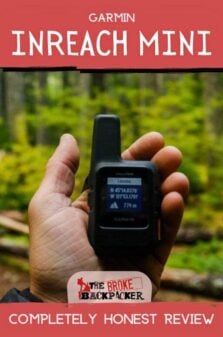There are a million and one reasons why traveling or hiking with a two-way satellite messenger device (ie, A Satellite Phone) is a good idea. In many remote parts of the world cell signal and wifi are not available and on rare occasions, being able to call for help can be a matter of life or death. The Garmin Inreach Mini is the answer to all of your off-grid communication worries— in the smallest possible package imaginable.
Garmin has been leading the way for GPS tracking and satellite messaging for decades now. For backpackers and explorers who go off-grid, spending time away from the comforts of phone/internet signal for extended periods, the Inreach Mini is a must-have piece of gear.
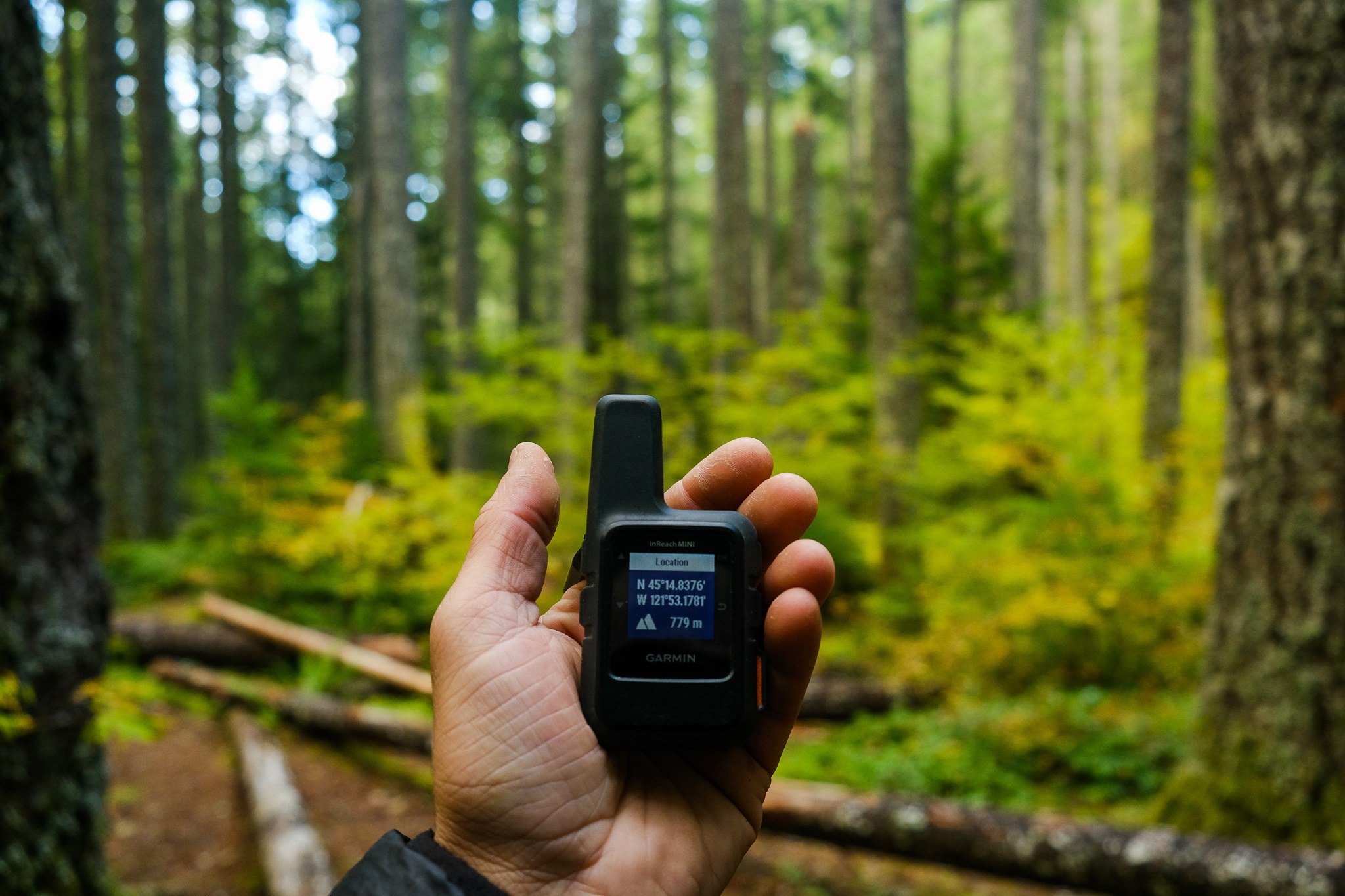
Photo: Chris Lininger
The Broke Backpacker is supported by you. Clicking through our links may earn us a small affiliate commission, and that's what allows us to keep producing free content 🙂 Learn more.
Life is unpredictable. Having the ability to send the important people in your life check-in messages and/or contact professional help from literally every corner of the globe is a game-changer.
This year I was able to test the Inreach Mini in the field while leading trekking tours in Northern Pakistan. Below, I break down everything I learned from months of using the Inreach Mini nearly every single day.
This in-depth Garmin Inreach Mini review covers all of the important need-to-know aspects of this truly remarkable satellite messenger device. Learn about key features and functions of the Inreach Mini, messaging capabilities, subscription plan options, weight/packability, the Iridium satellite network, competitor comparison, and much more.
By the end of this review, you will not have any doubts concerning whether or not the Inreach Mini is right for you and your adventures…
Let’s dive right in…
Garmin Inreach Mini Review: Why is this Device the Best Satellite Messenger for Backpackers?
Here are some of the important questions this review will answer:
- How reliable is the Inreach Mini? Can I send messages from anywhere?
- What is it like to use the Inreach Mini? Is it complicated?
- How much does a Garmin Inreach Mini subscription plan cost?
- Can I use the Inreach Mini with my smartphone?
- What happens when I push the SOS button?
- How does the Inreach Mini compare to other satellite messenger devices?
- Can I use the Inreach Mini to get real-time weather updates?
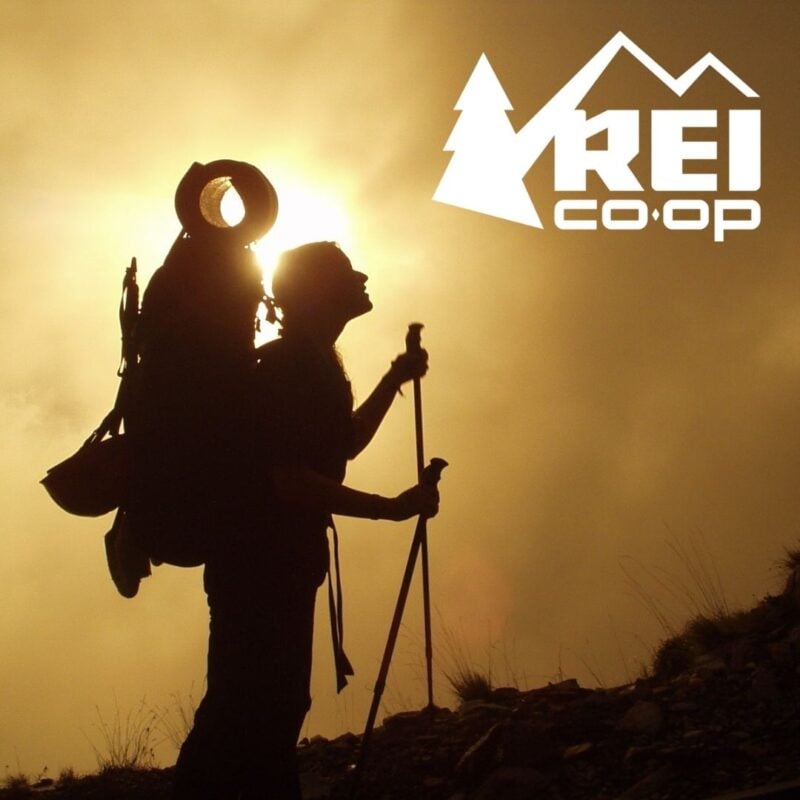
REI is one of America’s biggest and most-loved outdoor gear retailers.
Now, for just $30, get a lifetime membership that entitles you to 10% OFF on most items, access to their trade-in scheme and discount rentals.
Join REI Today!Garmin Inreach Mini: Key Features and Performance Breakdown
Let us start by getting to know the ins and outs of just what the hell the Garmin Inreach Mini ($350) is capable of.

Inreach Mini Messaging Capabilities
In case you don’t know already, the Inreach Mini is a 2-way satellite communicator. This means that the device can both send and receive messages, unlike other devices that can only send messages. Messages sent (either to a mobile phone or email address) to a person will also include data about your location including an accurate topographical map location for a visual. Every message you send contains the following information:
- Time sent
- Date sent
- Coordinates (example: N 45.247439° W 121.886726°)
- Speed (if you are moving while sending the message)
- Elevation
- Map of location (you can disengage this feature if you prefer).

The act of messaging on the device itself is probably the greatest fault of the whole device. Long story short, composing a message on the Inreach Mini interface is about as pleasurable as walking barefoot over broken glass bottles.
Good news though! The Inreach Mini can be paired with a smartphone via Bluetooth. Once connected to your phone you can compose a message as if you were sending a normal text message, which removes the pain of typing on the Inreach Mini’s interface altogether (there is no keyboard).
Note that all messages must stay under the strict 160 characters limit, otherwise the message won’t send. I found that 160 characters, while limiting at times, is more than enough to get your point across IE “I’m alive, don’t worry” or “HELP! SEE LOCATION!”. Just don’t go expecting to be able to write lengthy updates or rambling love notes.
Messages sent to the device don’t always come through instantly. You need to have a signal in order to receive messages. The “check mail” function allows you to refresh the inbox in case another message was sent to you after the last mail check.
-> Interested in more fully featured GPS/Satellite Devices? Check out out epic review of the Best Handheld GPS on the market right now.

Photo: Chris Lininger
Utilizing the Pre-Set Messages Function
One feature I found myself using all of the time is the pre-set messages function. Before any trip, you can write up to three pre-set messages attached to the recipients of your choice. All Garmin Inreach Mini plans offer unlimited pre-set messages. This means that you can quickly (and cheaply) send pre-determined messages to your partner, mother, or colleagues.
If you want to save your precious monthly message allowance, but still want to let the people in your life that you are breathing, having the pre-set message option is invaluable. Getting your pre-set messages set up is easy and only takes a few minutes to complete. Once logged into your Garmin account online, you can write pre-set messages and log recipients from there.
It isn’t possible to change your pre-set messages in the field, however. So before any trip, think carefully about what you want your messages to say and who you want to send them to.

Photo: Chris Lininger
The Inreach Mini SOS/Emergency Function
This Garmin Inreach Mini review would not be complete without talking about the most important feature of this device: the SOS button.
Hopefully, there will never be a time on any of your adventures which requires you to use the SOS/emergency function. If and when that day comes though, the SOS function could well save your life or the life of other people in your group.
So how does the SOS function work? If you put out the call for help do magical Storm Troopers parachute out of the sky to come to your aid? Well, not exactly.

Photo: Chris Lininger
Once the SOS button has been engaged, the signal is transmitted to the Garmin Headquarters. When you activate the Inreach Mini for the first time, Garmin takes some basic information about you including your emergency contact details, so they know who to contact. The SOS signal also contains details about your location, so the folks working at the Garmin Headquarters will know exactly where to send help.
It is very important to understand though that response time greatly depends on many factors. Since local emergency authorities will be notified about your emergency call for help, their response time will vary based on resources available, your location in proximity to emergency transport services, local policies involving search and rescue, and just the basic socio-economic realities on the ground wherever you happen to be.
(PSSSTTT – If you are headed of grid into remote areas, you should think about packing a good First Aid kit)
GEOS is the world leader in emergency response solutions and monitoring. They’ve supported rescues in more than 140 countries, saving many lives in the process (the ones following the Nepal Earthquake for example). And they’re standing by 24/7 to respond to your SOS, track your device and notify the proper contacts and emergency responders in your area.
Once you’ve triggered a distress signal, you can expect a delivery confirmation that help is on the way and be continually updated on the status of your response team. You can also communicate directly with GEOS (if you are able to in an emergency scenario) to provide them with more information/details regarding your situation and needs.
Please note that you will be responsible for the cost of evacuation, search and rescuse and these costs tyoically run into the several thousands of dollars. Therefore, do obtain good, robust travel insurance before you leave home.

Photo: Chris Lininger
Inreach Mini Tracking and GPS Functions
The tracking function allows users to track, save, and share distances. This feature is super handy if you are on an extended multi-day backpacking trip. All subscription plans (except the basic Safety Plan) come with unlimited tracking points. Most plans offer tracking points at 10-minute intervals (the Extreme plan offers 2-minute tracking intervals). Personally I used this function often just to know how far I was trekking each day.
For location and elevation data, the GPS function does just that (there is no built in altimeter, the altitude reading coimes from the satellite signal). Sometimes it takes a few minutes for the Inreach Mini to find a signal, but once it does the GPS interface displays the coordinates and altitude of your location.
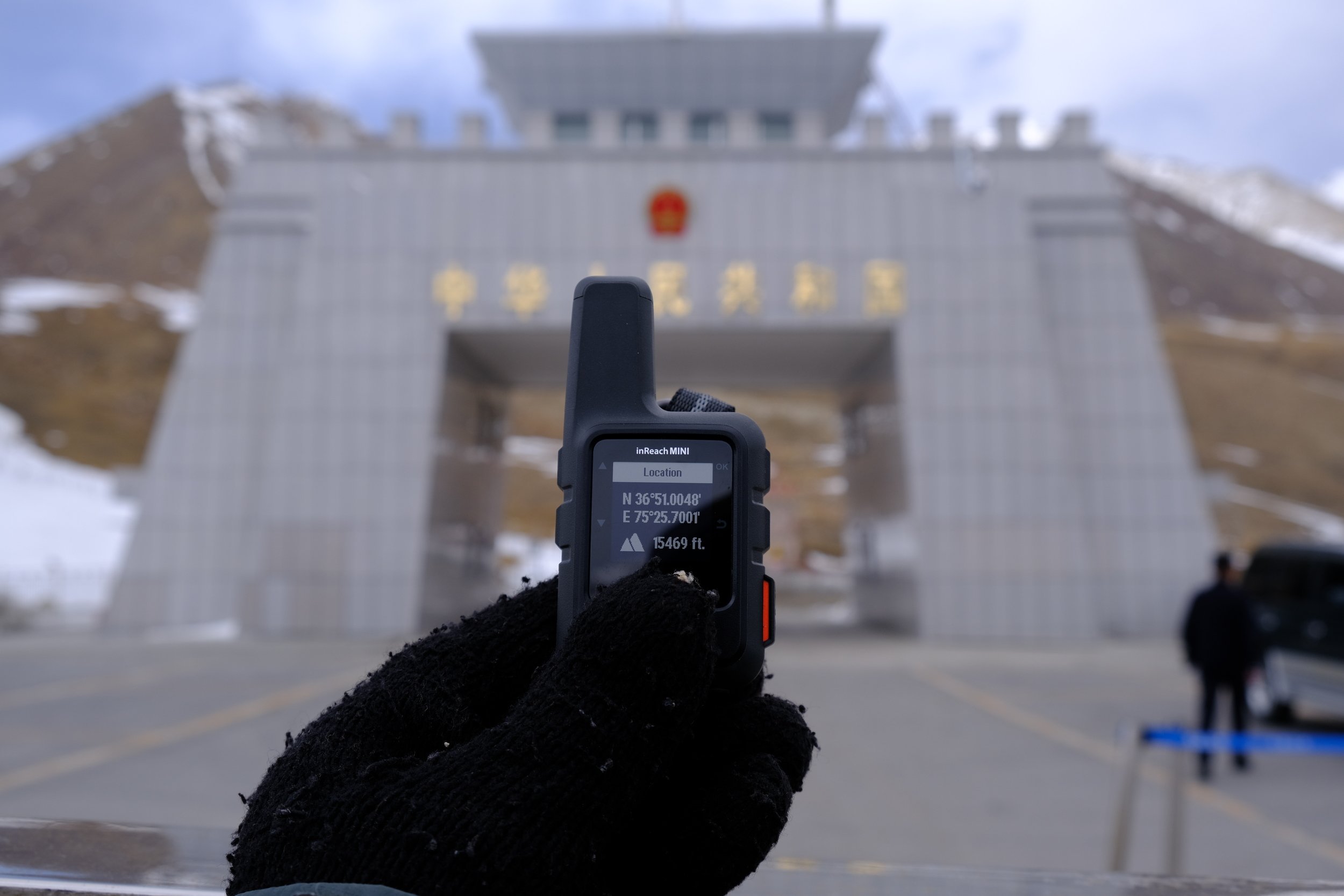
Photo: Chris Lininger
If you have a barometric watch as I do, you can use the Inreach Mini to calibrate your watch’s altitude reading. I found the altitude data provided by the Inreach Mini to be very accurate (within a couple of meters). When in the mountains, I used my Inreach Mini just about every other day to calibrate my watch which was super helpful.
If you have your display brightness turned all the way down, Garmin claims that the battery life can last 90 hours for tracking purposes. I am skeptical about that number. That said, I rarely needed to recharge my Inreach in the field (using a power bank) and usually, the battery would last several weeks even with daily use.
Note that you can configure your preferred units (imperial vs metric) on the device in settings.

Photo: Chris Lininger
Inreach Mini Size and Weight
One of the biggest draws for me to the Inreach Mini is its size, or should I say lack of size. As a guide, I am normally carrying a silly amount of gear, so any corners I can cut to save weight are greatly appreciated. Weighing in at just 3.5 oz (100.0 g), the Inreach Mini’s weight will likely be the least of your concerns. Even the most uptight ounce cutting ultralight backpacker can appreciate just how packable the Inreach Mini really is.
Whether you are rock climbing, out for a short day hike, or camping out in the mountains, there really is no argument not to bring the Inreach Mini along for the ride. Certainly, its weight and size will never be an issue for you.
For its small size and abilities, I don’t think another satellite messenger device can match the Inreach Mini’s all-around performance. The only device that even comes close to hanging with the Inreach Mini is the SPOT Gen3 Satellite Messenger. Whilst still a bit larger and cheaper than the Inreach Mini, the Spot Gen3 does not have the same functionality including no 2-way messenger function.
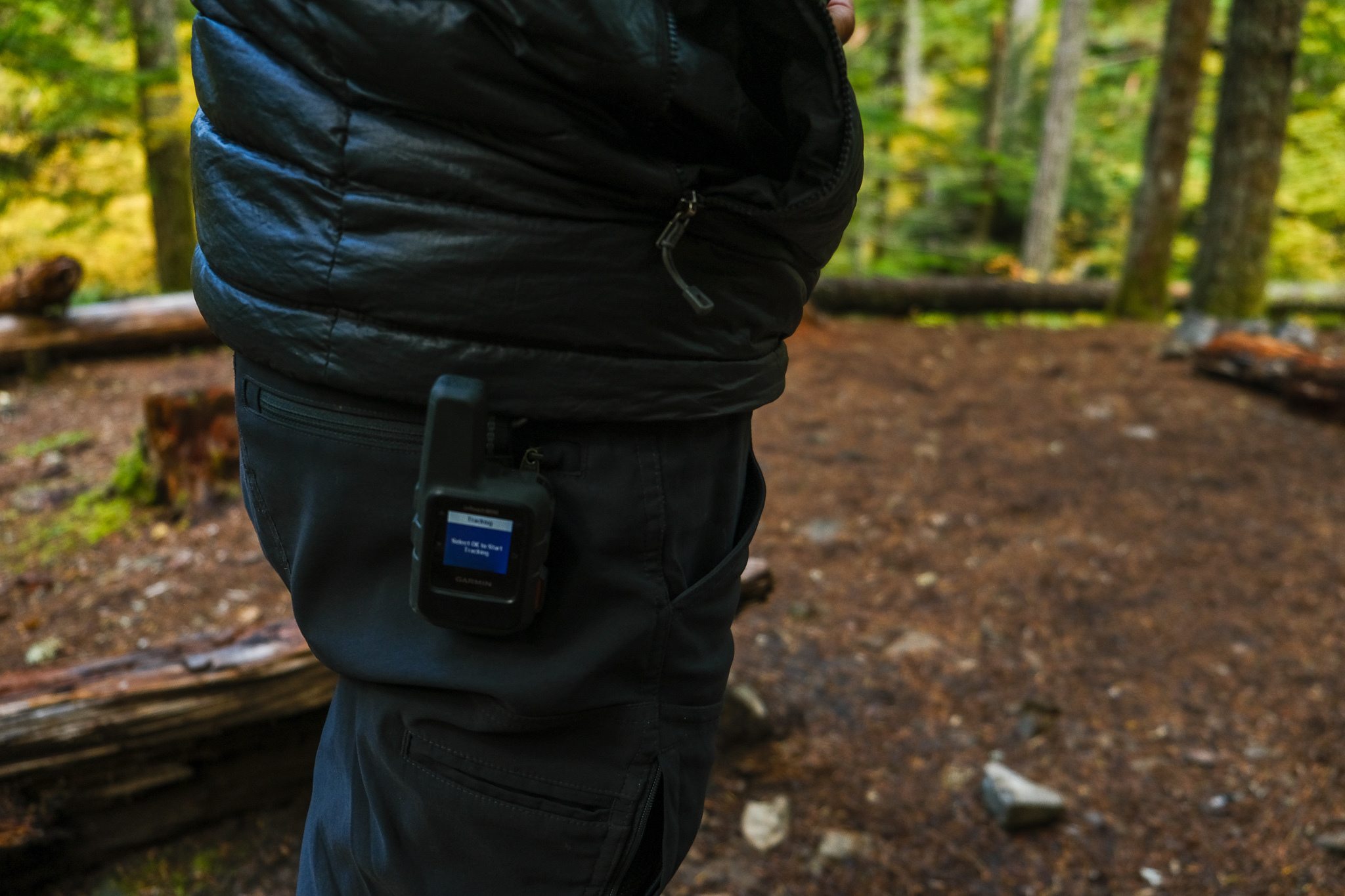
Photo: Chris Lininger
What the Hell is the Iridium Satellite Network?
This section is important so pay attention! Stripping away all of the Inreach Mini’s sexy features, let’s take a look at the Garmin Iridium satellite network and what it means for your messaging capabilities.
Perhaps the most important aspect of any satellite communicator is not how it is to write messages on the device but rather how it is to actually send them. The main reason why I went with the Garmin Inreach Mini is because of the Iridium satellite network it utilizes. The Iridium network provides pole to pole coverage with no black spots (areas without coverage) including being out in the middle of the ocean thousands of miles away from land.
Because I lead tours in Pakistan and other remote lands on earth, I needed a satellite messenger that would perform in these isolated places. People who do most of their backpacking or traveling in North America or traveling in Europe don’t necessarily need to rely on the Iridium satellite network.
The Spot Gen3 has the reputation of providing a decent signal in western countries. Once outside of western civilization though, the Spot Gen3 is notoriously unreliable as it does not use the same advanced network as Garmin.

Photo: Chris Lininger
Testing the Inreach Mini in the Earth’s Most Wild Places
This past summer I spent two weeks trekking to K2 Base Camp in one of the most remote parts of Pakistan. Every day on that trek I sent messages to people without any connectivity issues. The same goes for when I was in a no-man’s-land part of Southern Kyrgyzstan recently. My messages never failed to send and my confidence in the Iridium satellite network was properly established.
I can’t imagine being in a remote part of the world and having my satellite messenger fail to find a signal. I mean that’s the whole point of carrying one of these devices, no? Point being, if you spend most of your time in western countries, you don’t necessarily need to be tapped into Garmin’s badass satellite network. At the same time, if you want to buy one device that will cover you everywhere on earth, going with the Inreach Mini is the obvious choice.
It is important to note that Garmin, Spot, and other competitors like Bivystick and Somewear also use the same GEOS emergency responder services. The main issue is not all of these devices have the same connectivity capabilities, meaning with devices NOT on the Iridium satellite network, it is not guaranteed that your device will have sufficient signal to get an SOS call out.
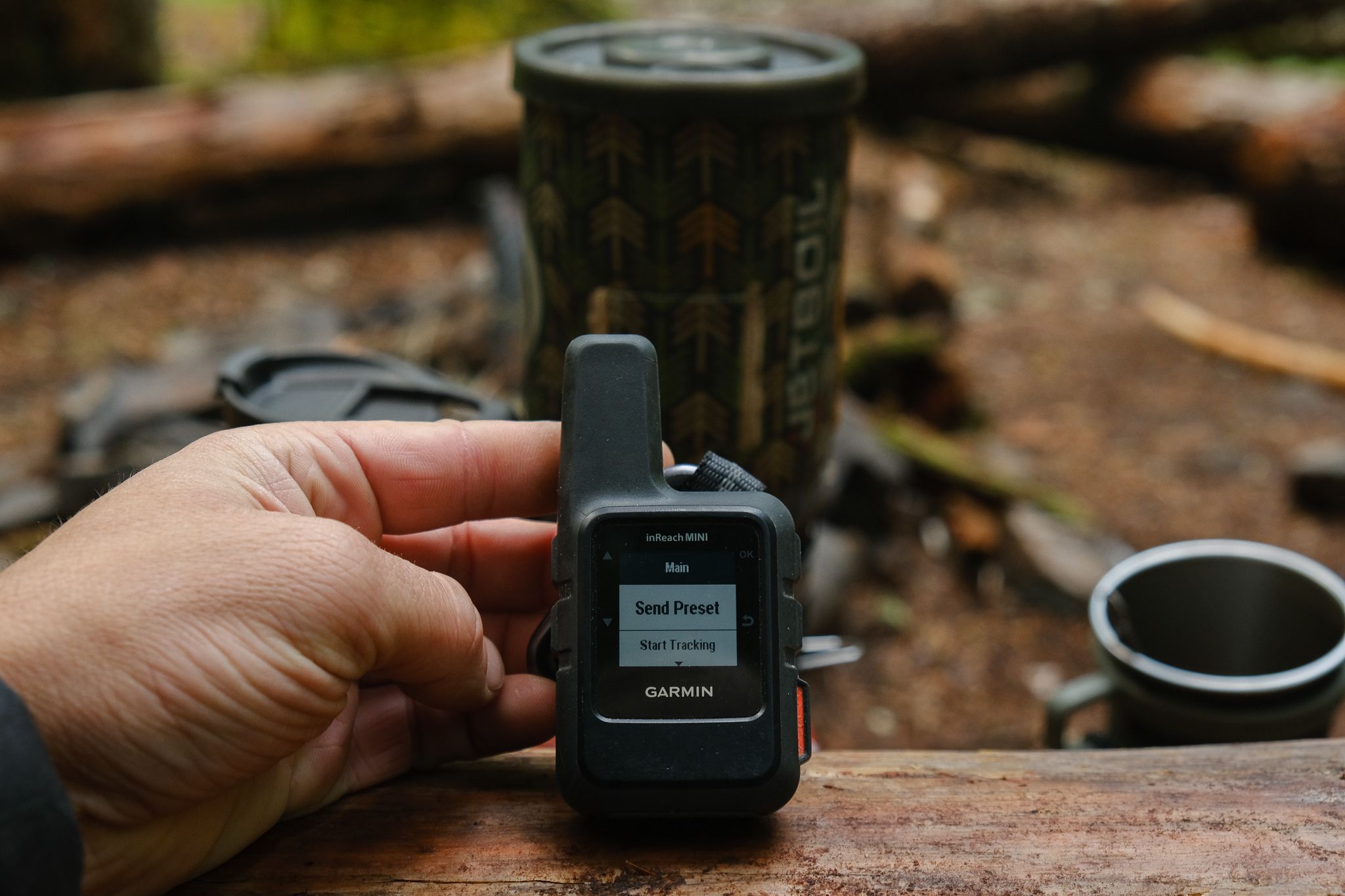
Photo: Chris Lininger
Pairing the Garmin Inreach Mini with Your Smartphone
As I mentioned before, the Inreach Mini integrates easily with your smartphone via Bluetooth. Since you are sacrificing legit texting capabilities on the device itself, Garmin has made it super easy to forget altogether that it is possible to write a message on the Inreach Mini device.
Garmin’s Earthmate app allows users to navigate through sending/reading messages, message history, tracking history, some device settings, view detailed maps, view weather forecasts, and use a compass tool if need be.
You can even activate the SOS distress call from within the app. Personally I think it would be much more gratifying to push the physical button on the device itself, but that’s just me. Thankfully I have never had to engage the SOS function, either on the device or within the app!

Photo: Chris Lininger
I’ll put it to you this way: without the Earthmate app, the Garmin Inreach Mini has some serious shortcomings (mostly related to writing messages on the device). With the Earthmate app, the device is transformed into a whole other machine, allowing you to easily compose messages as if you were texting your mate in the city.
Given the realities of sending communications through a satellite messenger, it is important to have realistic expectations of the Inreach Mini and all other satellite communicators. Messages are NOT sent instantly. The way the device works is simple. The device must be able to communicate with a satellite moving in space miles above your head. Satellite messenger devices struggle if you are inside of a building, under thick vegetation, or in a narrow canyon. They need clear, unobstructed access to the sky in order to work.
On average, I was able to get a message out 1-2 minutes after pressing “send”. On a few occasions, namely, when I was in a thick forest, messages took up to 10 minutes to send (because I could not be bothered to walk into more open space). I think that’s really very good going.

Photo: Chris Lininger
Inreach Mini Battery Life
When compared to other satellite devices, the Inreach Mini is pretty weak in the battery department. There is only so much juice they could fit into such a small package I guess. That said, the Inreach Mini has a legit 50 hours of battery life. 50 hours can go a long way if you are only using the device 30 minutes a day.
As previously mentioned, I went weeks in between charging mine. One rarely spends more than a few minutes each day operating the device (once you take away Instagram, Tinder & Candy Crush, these devices don’t hold quite the same appeal). There is no camera, no music, no entertainment features. Basically, apart from checking your altitude, sending and receiving a message or two, and maybe having a look at the weather, there is no need to spend hours a day on the device. And that’s the whole point of getting outdoors.
Even for a month-long expedition, you would probably only need to charge the Inreach Mini once or twice during that time period.
By comparison, the bigger Garmin Explorer satellite messenger is capable of sending 1000 messages (100 hours) before it needs a recharge. The Spot Gen3 boasts 150 hours of battery.
I always tended to keep my Inreach Mini’s display at around 10%, thus maximizing the amount of time between charges. Even at 10%, you can still see the screen fine and conduct your business on the device as usual.

Photo: Chris Lininger
Garmin Inreach Mini Plans: How to Choose the Right Subscription
In order to activate and operate any Garmin satellite device, you’ll need to purchase a subscription. The subscription options are broken up into four categories: Safety, Recreational, Expedition, and Extreme.
Each plan offers different per month messaging limits (pre-sets are unlimited across every plan) along with other usage differences.
For my own messaging needs, the Recreation Plan was more than enough to cover what I needed. In theory, you won’t be sending one message every single day of your trip. Sometimes a week would go by without me sending an Inreach message.
Other days I would send four or five in a single go. I never went over my 40 message monthly limit but came close a few times, I must admit. I would also use the basic weather function a few times a month (costs one message credit with the Recreation Plan). I wasn’t super impressed with the basic weather information that came back, but hell, it is better to have some information up in the mountains than none I suppose.
Note that your monthly message limit includes received messages as well as messages sent. It is a good idea to tell your friends and family not to reply to every single message multiple times so you don’t run out of message credits within your first week out.
Here is a breakdown of each plan Garmin offers:

Garmin Inreach Mini vs The World: Competitor Comparison
Let’s now take a look at how the Inreach Mini stacks up against other satellite messenger devices.
In terms of the Garmin Inreach Mini vs GPSMAP 67i (also by Garmin), there are a couple of key differences between the two models. The Garmin GPSMAP 67i is feature-loaded and is capable of more than the Inreach Mini.
The GPSMAP 67i adds preloaded DeLorme TOPO maps with onscreen GPS routing plus a built-in digital compass, barometric altimeter, and accelerometer. Bottom line, this device is badass. All of these bells and whistles are absent in the Inreach Mini. If you are concerned about size and weight, the Explorer+ is definitely bulkier and 4 oz. heavier.
Price is also a factor here as the GPSMAP 67i costs $600 while the Inreach Mini Costs $400. The average backpacker does not need all of these features in my opinion.
While it is cool to be able to track routes and hiking progress using the built-in topo maps, it isn’t mandatory to have that ability unless you are going on a serious expedition to a super remote country.
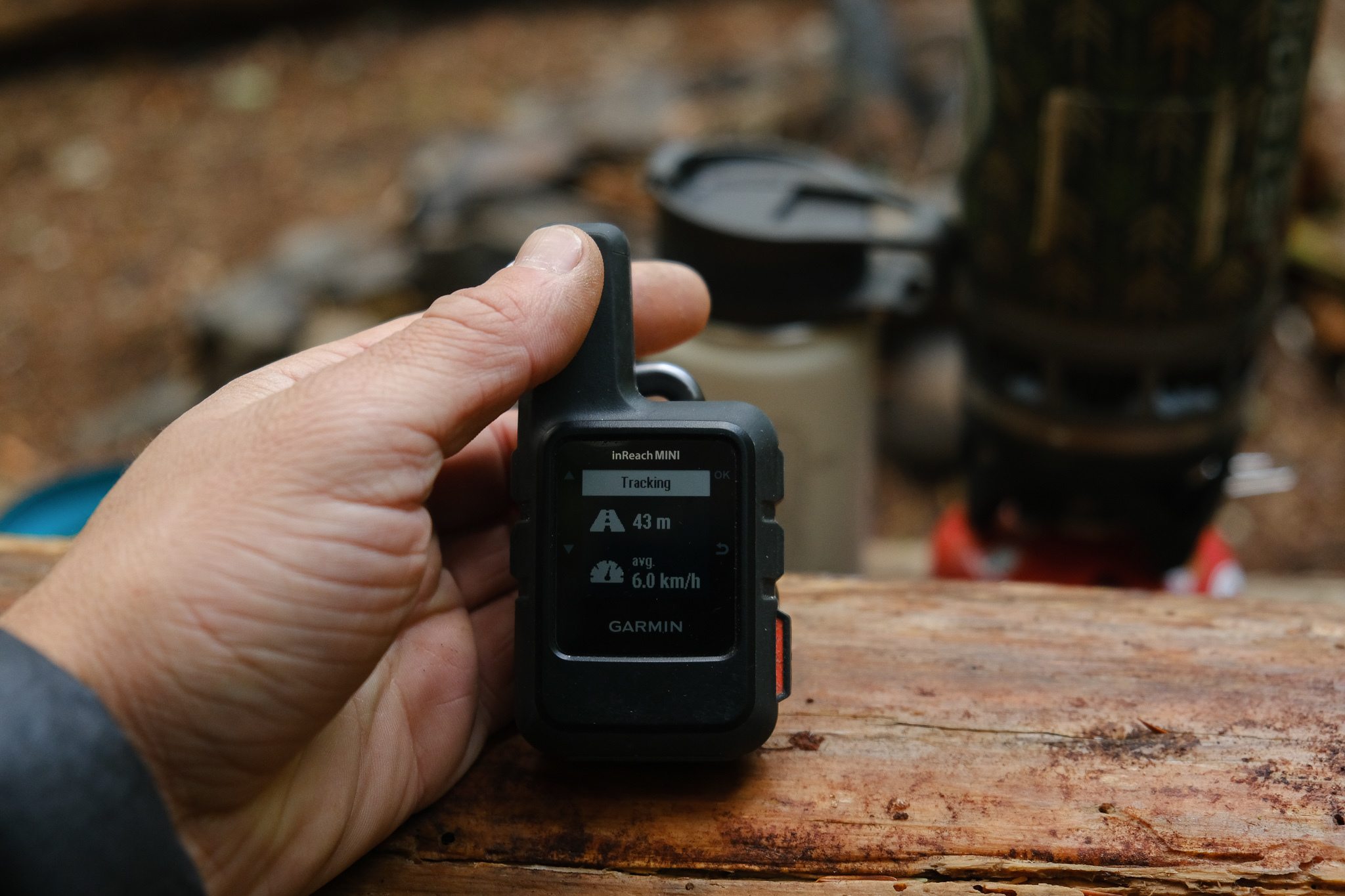
Photo: Chris Lininger
Garmin vs Spot
Garmin’s main competitor for years now has been Spot. The Spot devices are functional enough, but where they fall short, in my opinion, is three-fold. To start with, Spot devices can’t be paired with your smartphone, meaning you are stuck with composing messages on the device itself.
The second point of alarm is that Spot’s network has a poor reputation in certain parts of the world. The last thing I would want is to be in the middle of Pakistan, in an emergency and carrying a satellite device incapable of connecting to a network. That really defeats the entire purpose of having the thing.
My final major qualm has to do with the Spot’s SOS function. The main SOS feature is much the same as the Inreach Mini, with one major difference. Spot devices do not allow you to further communicate with emergency responders on the other end, which makes it impossible for you to provide them with the details of your situation.
Where Spot wins out over the Inreach Mini is its long battery life and attractive price point ($140), complete with very reasonable rental options if you want to go that route.
Likewise, the network coverage of the ZOLEO Satellite Communicator device is nowhere near as impressive as the InReach Mini.
Other devices like Somewhere and the Bivystick also operate on the Iridium network, so the signal coverage zone (the whole world) is on par with Garmin devices.
The general mechanics of the SOS function across all of these devices are more or less the same. If you send out the SOS call the response is basically identical.
Competitor Comparison Table

Garmin Inreach Mini 2
- Price > 350
- Network > Iridium
- Weight > 3.5 oz.
- Smartphone Compatiable > Yes
- Battery Life > 50 hours

Garmin GPSMAP 67i
- Price > 600
- Network > Iridium
- Weight > 8.1 oz.
- Smartphone Compatiable > Yes
- Battery Life > 165 hours

Spot X
- Price > 249
- Network > Globalstar
- Weight > 7 oz.
- Smartphone Compatiable > Yes
- Battery Life > 240 hours
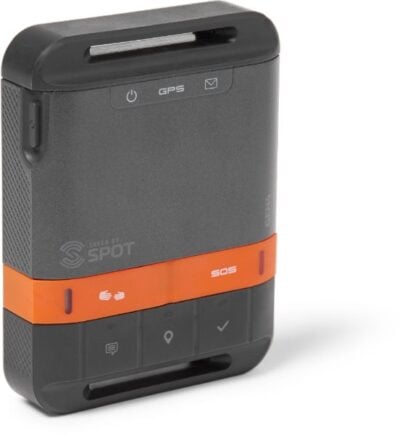
Spot Gen4
- Price > 150
- Network > Globalstar
- Weight > 5 oz.
- Smartphone Compatiable > No
- Battery Life > 4 AAA lithium batteries

Our GREATEST Travel Secrets…
Pop your email here & get the original Broke Backpacker Bible for FREE.
Garmin Inreach Mini Review: Final Thoughts
So what is my final verdict? Despite its relatively short battery life, frustrating message writing interface, and initial high purchase cost, the Garmin Inreach Mini remains my all-around favorite 2-way satellite messenger device for the average backpacker or traveler.
The Inreach Mini’s smartphone pairing capability and ease of use along with its small size and ultra-reliable satellite network make this device hard to beat. While many of us (myself included) may be drawn to the exciting offerings offered by the Garmin GPSMAP 67i, most people will find that the Inreach Mini offers everything required to cover your backcountry communication needs.
If prioritizing weight, size, and simplicity at the expense of a few features is important to you, then I recommend going with the Garmin Inreach Mini vs Explorer+.
During the six months I traveled with the Inreach Mini, I really did not have a bad experience that made me doubt its functionality or abilities for a second. Whenever I needed to get a message out, check the weather, or track my progress, the Inreach Mini came through for me in a big way. Frankly, the Garmin Inreach Mini is the only 2-0nly satellite messenger device you’ll ever need to stay connected even on your wildest adventures.
What is our final score for the Garmin Inreach Mini? We give it a rating of 4.7 out 5 stars!


Photo: Chris Lininger
What are your thoughts? Did this brutally honest review of the Garmin Inreach Mini 2-way satellite messenger help you? Anything I didn’t answer? Let me know in the comments below – thanks guys!
Need a phone? Check out our guide to the best satellite phones.
Buy Us a Coffee!
A couple of you lovely readers suggested we set up a tip jar for direct support as an alternative to booking through our links. So we created one!
You can now buy The Broke Backpacker a coffee. If you like and use our content to plan your trips, it’s a much appreciated way to show appreciation 🙂



